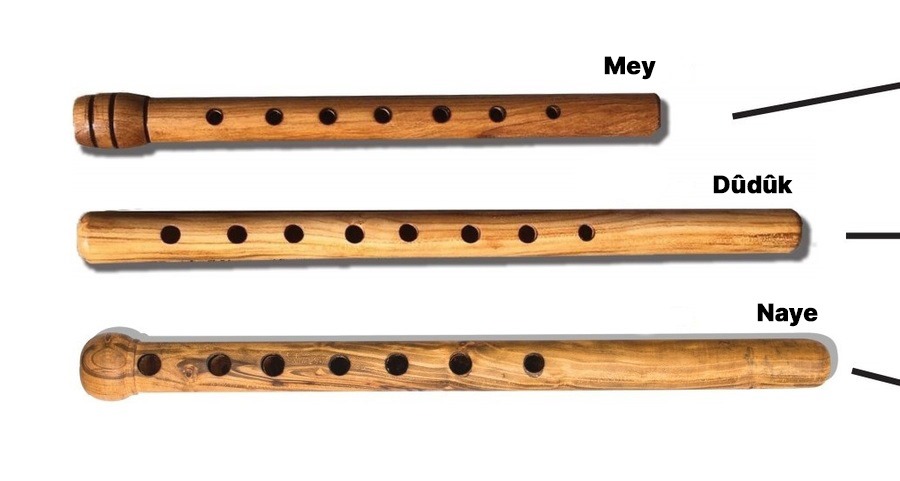Naya:
This instrument is known by different names such as Narmanaya, Narmaney, Balaban, Baleban, Baraban, Doudouk, Dourdouk and May.
It belongs to the wooden wind instruments with Pik and is made of wood. It is blown into the Pik to make musical sounds.
A variety of woods can be used to make this kind of instrument but apricot tree, prune tree, boxwood, jujube, maple, and ebony are among the best kinds of woods to make this instrument. These trees are very strong so the wood of these trees has more density. They can create a much better and softer sound.
The sound of Naya is very beautiful and creates an emotional sense, however, it is known to be an instrument that can be used for happy occasions, too. It makes the audience release their sadness and the player can express their deepest sorrow through playing this instrument.
Different viewpoints and ideologies have made it possible to use musical instruments for a variety of occasions. Those countries that are out of Zagros borders and the Middle East, such as Europe and Western countries, have their own music styles and singing methods that are different from other places.
Each music instrument is made of a particular kind of wood and particular sizes should be considered. This will make the instruments more beautiful and give the sense of differences among these instruments and to which region they belong. These particular features can be seen in Naya, too.
From the north to the south of Zagros, Armenians, Azeris, and Kurds (Kurmanj, Zaza, Soran, Kalhor, Hawram, Lak, …) play this instrument.
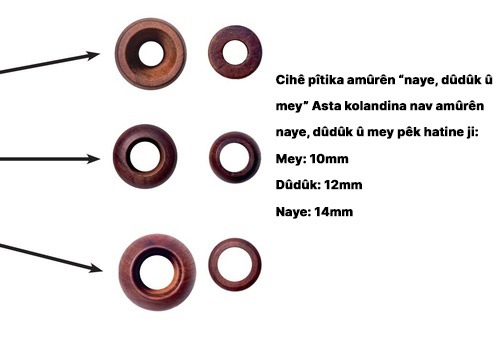
It is worth mentioning that imitating the singers' voices from each region has caused different styles in music techniques like glissando, vibration, non-chord tones, legato, staccato, crescendo, decrescendo, …
There are several methods for decorating this musical instrument that do not affect the sound of it.
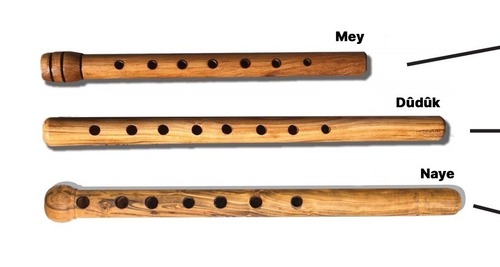
If Naya is made longer and its holes are on the lower parts of it, the sound will be bass. If we want to have a more treble sound, the Pik and Naya must be made shorter. This happens due to the time span the air takes to get out of the instrument.
The size of the holes and the thickness of the Naya pipe will affect the sound range.
Obviously, the holes must not be so large that they would make false notes while playing the instrument.
Pik
It is made of reed. It has two parts called Dambast and Chalama.
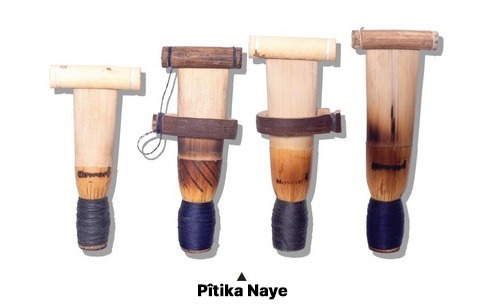
Dambast
It makes one end of the Pik closer so that it would not get disformed or broken.
Before Pik is made, that is when it is ready to be used in playing the instrument, one side of Pik will be straightened and folded with a small Dambast.
Dambast is made of two little pieces of wood that are attached to each other with a piece of thread.
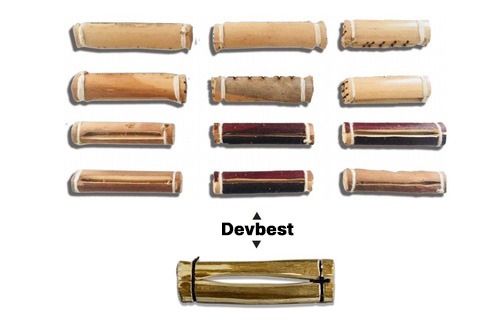
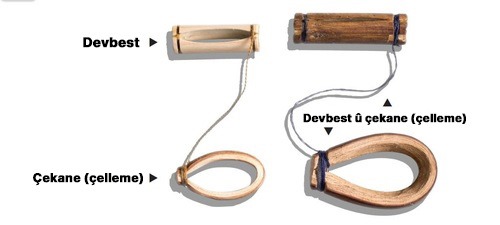
Chalama
Chalama is used on the back of Pik, that is the part where there is a bump. A Chalama made of a vine tree (white or black grapes tree) is bent more easily and will last for a longer time. Nowadays, Chalama is made of other kinds of trees.
It controls the amount of air inside Pik and helps the sound to change into treble or bass.
Tuning up the Naya means adjusting the range of treble or bass versions of the sound.
Chalama moves over Pik and it can change the Naya tuning to 1/4 tone.
Adjusting Chalama means to make a clear sound out of Pik. In order to do so, the Chalama must have bumps and dents on the inside and to have curved sides. This will prevent the Chalama from touching Pik completely and only those parts will touch it that have the bumps and dents.
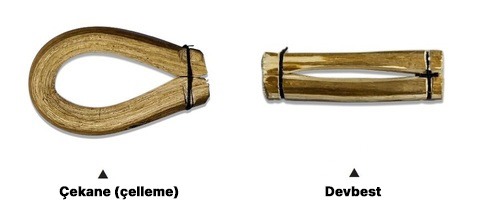
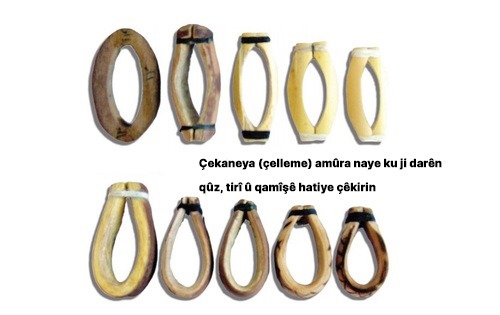
Blowing into Naya
After Pik touches the lips, in order for the instrument to make a sound, the air in the lungs and throat passes through the oral cavity into the Pik.
The way of blowing into the instrument is very important. Unfortunately, most of the Naya players blow into the instrument from their oral cavity which is not the right way to do so. Every wind instrument requires a special method of blowing. For example, for Qaranay (Clarinet), the player blows the air into the instrument from their diaphragm into their lungs in the form of "tu" and for playing flute it sounds like "fu".
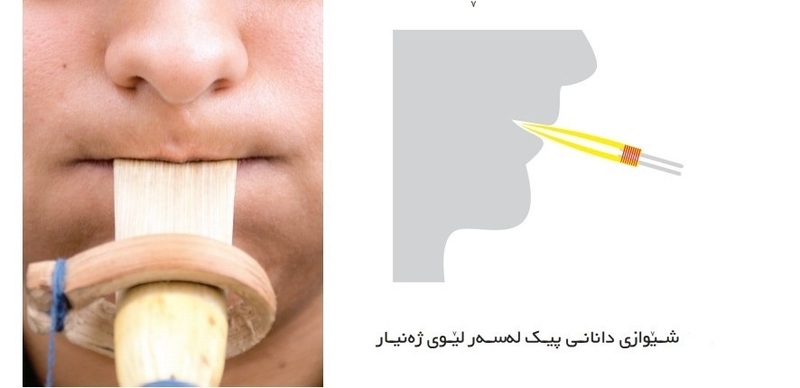
In playing Naya, the air comes from the lungs and diaphragm into the instrument sounding like "Hu". This method of blowing into the instrument makes the sound of Naya just and clear (without any disturbing sounds). This method of blowing is also common for Douzala and Zorna. Since these instruments are played while being inside the players' mouths, there is no other way of blowing into them.
When the player is using their lungs, throat, and diaphragm to blow into the instrument and make it play a sound, the Naya will make a just and flawless sound.
The tuning of Naya can be changed by the air pressure or lips intensity and change the treble or bass sound when it is necessary. In this method of blowing into the instrument, the flawless and clarity of the sound is very obvious. In addition, when the player is inhaling, the sound of Naya will not tremble or change (the change of the sound while inhaling will create false notes).


